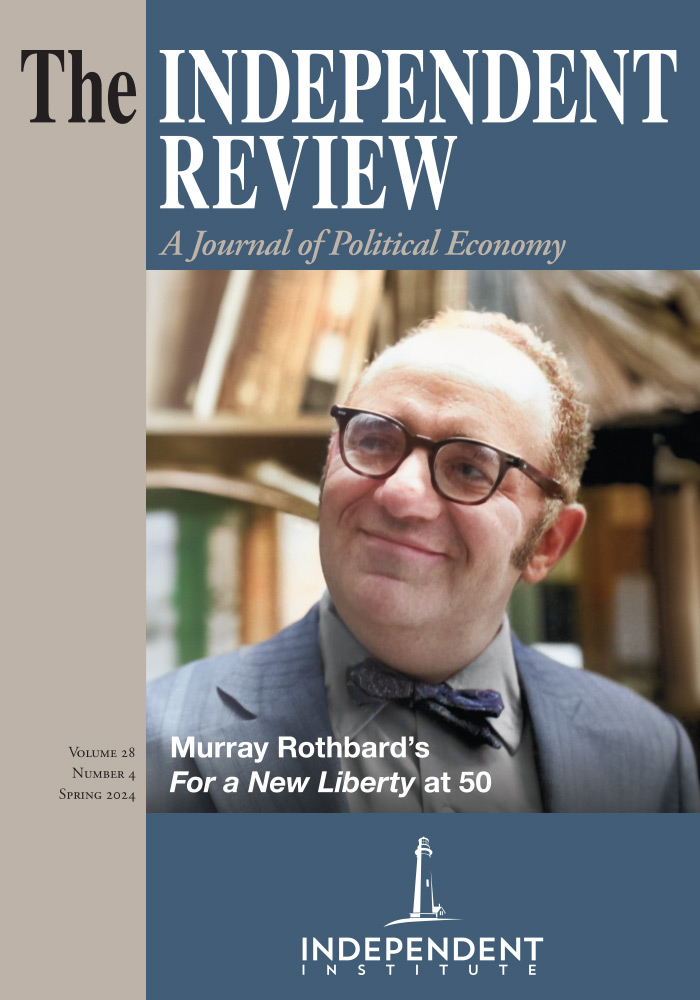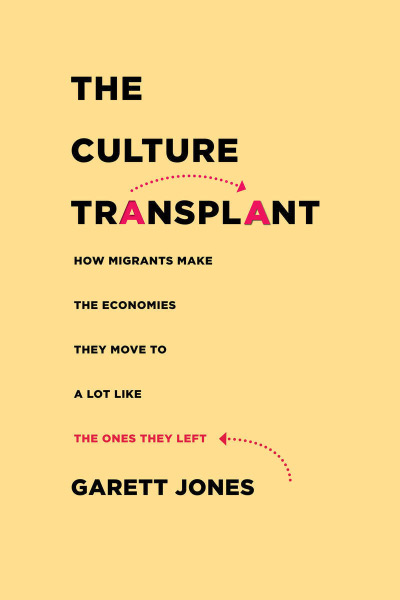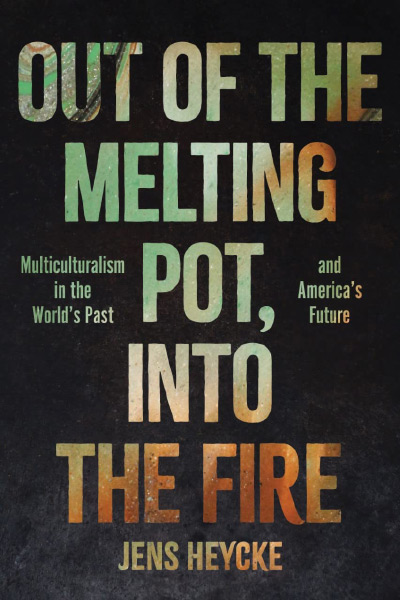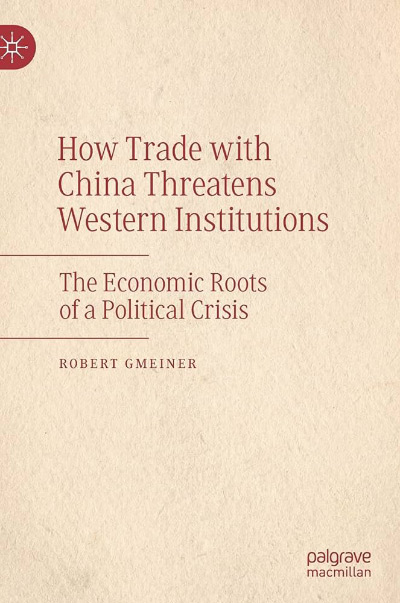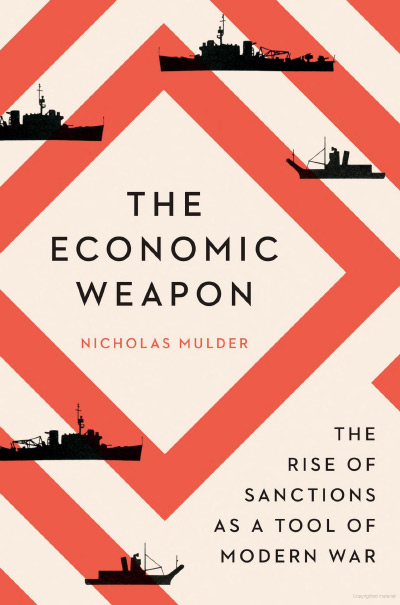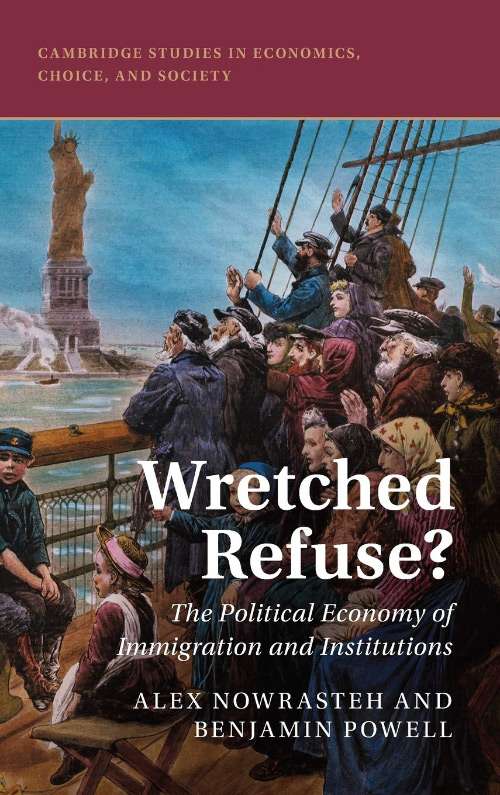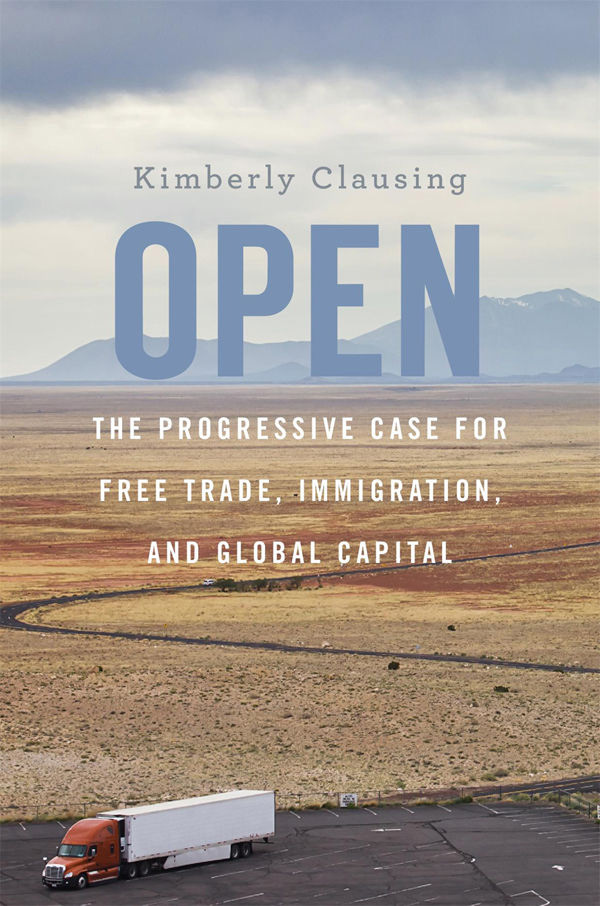Economists love immigration: the utilitarian case for immigration unites economists from various political backgrounds like no other issue. Among prominent economists, there is scarcely a single name willing to say that immigration has not been very favorable to American economic growth. Along with a handful of other issues like the chilling effects of rent control, the ineffectiveness of communism, and the importance of free trade, being unreservedly in favor of immigration is simply part of being an economist in America. In The Culture Transplant, however, iconoclastic economist Garrett Jones is less sanguine about immigration than your typical economist. Building on his work in Hive Mind: How Your Nation’s IQ Matters More than Your Own (2015, Stanford, Calif.: Stanford University Press), Jones explains how the characteristics of a population have major effects on economic outcomes for the group and not just the individual; whereas in Hive Mind the subject was IQ, The Culture Transplant is about the effects of culture, both of which have an outsized effect on the prosperity of the nation as a whole compared to individuals.
The Culture Transplant falls firmly in the economic development literature, exploring the most important of questions: why are some countries rich and others poor? Like many others before him, Jones suggests that culture is a large part of this answer. What is different about Jones’s approach is that he argues (based on a growing body of scientific literature) that cultural traits persist from generation to generation. Culture, like IQ, has a high degree of heritability.
The book starts on the offensive. In Chapter 1, provocatively titled “The Assimilation Myth,” Jones attacks the idea that immigrant culture does not matter because immigrants, or their descendants in just a handful of generations, will conform to the culture of their host country. Alex Nowrasteh of the Cato Institute frequently argues that immigrants assimilate very quickly, for instance in “The Political Assimilation of Immigrants and Their Descendants” he and his co-author conclude, based on a handful of questions in the General Social Survey, that “political assimilation is complete by the second generation.” But Jones cites data from the same survey and others challenging this view, concluding that “among the attitudes that substantially survive migration, many matter for the wealth of nations: savings rates, views of trust, and views toward government regulation and personal responsibility” (p. 25). On the issue of trust, for instance, Jones cites data saying that significant differences persist even to the fourth generation (p. 16).
Having established that important immigrant cultural attitudes persist over generations, Jones begins in Chapter 2, “Prosperity Migrates,” building the argument about how these persistent attitudes actually affect economic growth. He writes that “overall, the history of migration for the last five hundred years has been a story of places like Canada and Singapore, with high history scorers migrating to the nations of lower history scorers” (p. 35). No one suggests that these settlers mostly assimilated to their new homes. Based primarily on the work of Louis Putterman and David Weil (2010, “Post-1500 Population Flows and the Long Run Determinants of Economic Growth and Inequality,” Quarterly Journal of Economics 125, no. 4: 1627–82), Jones summarizes how migration from historically economically successful places, namely Europe and China, is a strong predictor of economic performance in countries today. He writes, “If the only thing you knew about each nation on the planet was the fraction of that nation with ancestors of European descent, and you did the best job you could trying to predict modern income per person using that one fact, you’d be able to predict two-thirds of all global income differences” (p. 39). Jones considers and dismisses several competing explanations other than ancestral experience, but admits at the end of the chapter that a deeper dive is necessary to distinguish whether “ancestral experience is merely a good predictor of modern productivity or instead overwhelmingly a cause of modern productivity” (p. 42), a question he explains will consume much of the rest of the book.
Chapter 3, “Places or Peoples?,” moves on to the question of “whether a history of technology in a place mattered more than the history of technology of the people currently living in that place” (p. 48). Building on the measures of ancestral experience in Putternam and Weil: how long your ancestors had lived under organized states (called State History) and how long your ancestors lived in settled agricultural societies (called Agricultural History), and combining this with a measure of technological history in 1500 taken from Diego Comin, William Easterly, and Erick Gong (2010, “Was the Wealth of Nationals Determined in 1000 BC?” American Economic Journal: Macroeconomics 2, no. 3: 65–97) Jones creates a composite score that he calls a “migration-adjusted SAT” score (SAT = State, Agriculture, and Technology) which lines up very well with economic poverty and prosperity, especially when more weight is given to technological development in the year 1500.
In Chapter 4, “The Migration of Good Government,” Jones expands on the predictive power of his deep-roots “SAT” score showing that it has the power to predict not only economic performance but also political corruption and political competence. He concludes that “the cultural transplant theory of government institutions does a good job, on average, of explaining differences in government quality across countries” (p. 72).
Switching gears in Chapter 5, “Diversity Is Our _____,” Jones asks “whether ethnic diversity helps, hurts, or doesn’t matter at all for group outcomes” (p. 83). Maybe countries can buck the trend suggested by their ancestral experience by forging a new, diverse identity? He argues that while it is clear that skill diversity is a benefit for economic productivity, ethnic diversity is at best a double-edged sword, perhaps providing some benefits but entailing some serious risks such as ethnic conflict and reduced trust. There is little in the way of conclusion in this chapter, rather Jones suggests that the next few decades will reveal whether the low-diversity, low-immigration policies of countries like Japan, South Korea, and China will perform better or worse than the nations like the U.S., France, Italy, and the UK, which have “built their immigration policies around the unscientific cliche that our ethnic diversity, in and of itself, is our strength” (p. 100).
Chapter 6, “The I-7” looks at the handful of nations that currently generate most of the world’s new technological ideas. Several pages are dedicated to determining which countries those are, and then he establishes how this innovativeness is closely connected with the ancestral experience score that has been previously established to be connected with economic and government institutional performance. The purpose of this chapter is to argue that “if national innovation depends partly on government quality ... then citizens of every nation have a strong interest in the SAT scores and in the ethnic and cultural diversity of the world’s high-innovation nations” (p. 102). He argues that everyone in the world should care (he further says they should be obsessed with the fact) that these highly innovative countries maintain their good institutions and not become more like other countries, since “there’s almost no patenting, and almost no formal R&D, in most of the world’s countries” (p. 108). This is a strong and novel argument, if placed somewhat awkwardly in the book.
Chapter 7, “The Chinese Diaspora: Building the Capitalist Road,” specifically looks at the effects that Chinese migrants have had in their host countries. Jones argues that Chinese immigrants have been “market-creating minorities” in the countries they immigrate to. This is a case study in successful culture transplantation and paints a compelling picture of what successful immigration policy looks like for Jones based on the arguments put forth in the preceding text. It is a highly effective capstone to the book. By focusing on the types of migration Jones thinks are helpful, he avoids painting an overtly negative picture of immigration as a whole, although this negative view of immigration is certainly implied.
The final chapter and conclusion of the book address some common complaints about the “Deep Roots” literature and the book’s thesis in general, but Jones clearly finds these critiques unconvincing. The greatest weakness of the book is that it does not respond to the decades’ worth of literature showing that positive growth effects are associated with higher levels of immigration, but it does not really seek to challenge those conclusions, focusing more on the long-run institutional quality effects resulting from changing culture. Furthermore, the book does not address the moral arguments in favor of open immigration at all, this is purely utilitarian economics.
The Culture Transplant is an important, thoroughly researched, and provocative book that challenges one of the sacred cows of the economics discipline. It represents the most serious challenge to immigration orthodoxy in the discipline. Defenders of open borders or relatively free immigration cannot dismiss the work and rest on their laurels, especially as the Deep Roots literature continues to expand.
| Other Independent Review articles by Zachary Gochenour | |
| Spring 2013 | War and Presidential Greatness |

